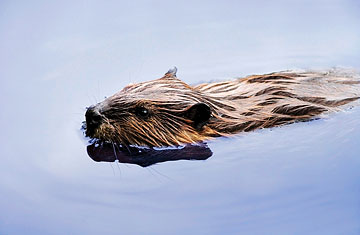
Leave it to beaver Watch the web-footed mammal build its lodge
The north Quebecois town of Tadoussac is caught between mountain and ragged shoreline, just where the fresh Saguenay Fjord runs into the warm, salty waters of the St. Lawrence River. Each year, from May to October, it swells with tourists hoping to glimpse the baleen whales that gather to gorge on the krill that thrive at this aquatic intersection.
Those who deign to drift inland, however, will meet with a wildlife-watching experience of a different kind — intimate, inexpensive and decidedly Canadian. For toiling away in Tadoussac's forgotten backwoods is the humble beaver, face of the 5 cents piece. Without him, the history of this former French trading post, founded in 1600 by reason of a fur monopoly, would hardly be the same.
Neither would the rowdy, red-roofed Maison Majorique, ajtadou.com, the town's only youth hostel. Free beaver-watching tours leave from its reception every day at 5 p.m., when the web-footed rodents wake to work through the night. For 21 years, the excursions have been led by the same woodsman. His face capped with a nest of frenzied white hair that reaches down into a matching beard, Coco is as coarse and weather-beaten as the wetlands he knows so well. "I prefer the forest to the sea," he offers up in thorny French. (He'll translate into an even thornier English upon request.) Partakers begin at L'Anse-à-l'Eau, a still lake ringed by dense firs and five log-heaped beaver homes. The wearying walk around the water takes about two hours with stops. Alone, Coco hikes the trail in 45 minutes.
An unmarked path winds its way around felled trees, every so often veering off to emerge at a rocky lookout over the lake. From there you're likely to spot a beaver parent or pup — often just a smudge of brown fuzz and a broad, scaly tail like the blade of a paddle gliding on the water. It isn't uncommon to catch the entire family at work, heaving shoots of wood from the forest to their thatched, lakeside lodge. "You can get within 2 m of a beaver if you conduct yourself properly," Coco says. "Don't walk on your heels or your toes," he admonishes, "keep your feet flat on the ground." From the bank, the volume of one's voice has little bearing on the beavers, but vibrations of the ground will send them scurrying.
Normally a gruff man of few words, Coco has voluble answers to any and all beaver-related questions. Along the trail, he identifies abandoned dams and interprets teeth marks, his expertise gained from a lifetime of observation. There is much to learn. Only a single beaver family, for instance, can inhabit a territory, which stretches beyond the boundaries of one lake. At the ripe age of 2, adolescent beavers are exiled and forced to find their own habitat. Beavers can stay underwater for as long as 15 minutes. They mate for life. But despite his clear preference for the critters, Coco is reluctant to speak ill of the massive marine mammals that do much to distract from the woods. "The whales bring the people," he says. The people would do good to remember to head in, occasionally, from the coast.
